Public Health
Before pot vote, consider health impact
June 22, 2010
 With California voters set to decide in November whether to legalize marijuana, Los Angeles County’s top health officer has come up with an analysis of the drug’s effects.
With California voters set to decide in November whether to legalize marijuana, Los Angeles County’s top health officer has come up with an analysis of the drug’s effects.
Dr. Jonathan E. Fielding’s June 8 report to the Los Angeles County Board of Supervisors draws on an array of studies from authorities, including the American Medical Assn. to examine what marijuana does to the health of those who use it medically or recreationally.
“We really tried to be very objective,” said Fielding, the county’s director of public health. He said he was moved to create the report because of a shortage of comprehensive data on the subject.
“There’s a lot of mythology on all sides here,” he said in an interview. “Trying to understand what the science says is often a good first step.”
Fielding’s analysis does not come down on either side of the initiative, but includes statistics about how often marijuana use is a factor in some treatment and hospital settings.
One-third of those admitted to Los Angeles County substance abuse treatment facilities say that marijuana is their primary or secondary drug of choice, the report said. Nationwide, it contributed to 375,000 emergency room visits in 2008.
“Marijuana is a significant public health problem,” Fielding said.
Used medically, though, it may be effective in treating a few conditions, the report found. In addition to treating nerve pain, it also can help combat severe weight loss, alleviate some multiple sclerosis symptoms, fight chemotherapy-related nausea and vomiting and relieve eye pressure from glaucoma.
As for recreational use, Fielding’s report states that marijuana is consistently associated with difficulties in learning and remembering new information, along with lower test scores and decreased levels of academic achievement. Studies also have found that marijuana use correlates to increased consumption of other drugs. But it has not been “consistently associated with other measures of mental and psychological harm,” the report said.
The report, citing national surveys, says that more than 30% of people 18 and older who’ve used marijuana in the past year are classified as dependent on the drug. But that number is greatly reduced when actual “diagnostic criteria” for substance dependence are considered. Under that measure, between 4% and 9% of marijuana users are addicted. Overall, Fielding reported, marijuana users are “considerably less likely to [become dependent] than users of alcohol and nicotine, and withdrawal symptoms are less severe.” Still, younger users face higher risks, with 17% of those who’ve used the drug at age 13 becoming addicted.
Other findings:
- One recent clinical trial involving marijuana smokers had to be halted early when some participants started having suicidal thoughts.
- Marijuana’s association with psychosis is “somewhat controversial.” Although some recent studies suggest an increased psychosis risk associated with marijuana use, “marijuana accounts for only a small proportion of psychoses.”
- Smoking marijuana, like smoking tobacco, has been linked to lung damage and chronic bronchitis. Additional long-term studies are needed to determine whether marijuana smoking leads to an increased risk of lung cancer or other cancers of the oral cavity and airway.
The initiative to legalize, regulate and tax marijuana will appear on California’s November 2 ballot. It would allow people over 21 to grow and possess the drug and would permit local government to regulate and tax its sale. It would prohibit using marijuana in public or when minors are present, and would not allow its possession on school grounds,
Posted 6/22/10
On alert for mumps
May 13, 2010
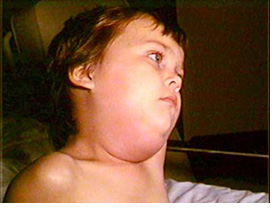 Getting the mumps was once a childhood rite of passage. But it’s rare in modern-day Los Angeles County, where the vast majority of young children are vaccinated against it, along with measles and rubella.
Getting the mumps was once a childhood rite of passage. But it’s rare in modern-day Los Angeles County, where the vast majority of young children are vaccinated against it, along with measles and rubella.
So with nine cases so far this year—six confirmed and four of those in the past two months—the Public Health department isn’t taking any chances. Mindful of an outbreak that started last year in Orthodox and Hasidic Jewish communities in New York and New Jersey, the department is putting out the word that mumps is communicable, potentially dangerous—and preventable.
The county had just seven confirmed cases in all of 2009, the same number in 2008 and only five in 2007, according to Dr. Jonathan E. Fielding, the county’s director of public health. In a public health advisory issued Tuesday, May 11, Fielding said symptoms include “swelling of salivary glands, fever and inflammation of the testes in teenage and adult males.”
He urged those with symptoms to stay out of group settings and see a doctor. And he noted that the best protection against the virus is the measles-mumps-rubella vaccine.
While the vaccine is most commonly given to children, medical officials say adults who have not been vaccinated should also do so.
“A few of the cases seem to have some relationship with the outbreak in the Hasidic community in New York,” Fielding said Thursday. But piecing it all together is a complicated matter of medical investigation. “Somebody came through South Africa,” Fielding said.
Dr. Nelson El Amin, medical director of the county’s immunization program, said there was evidence that some of the L.A. cases “may be related to travel related to Passover.”
“Not all are among the Hasidic population. Some are,” El Amin said.
He declined to be more specific, other than to say the L.A. patients ranged in age from infancy to adulthood and were from the northern and “Metro West” areas of the county.
“I can tell you that the majority of those who got it have not been immunized. I don’t believe any of them have been immunized as kids.”
The Centers for Disease Control and Prevention have been tracking the New York area cases as well as an outbreak at a small college in Iowa and among “a bunch of guys in Omaha” who went to a reunion basketball game and came down with the mumps, among other cases, spokesman Jeff Dimond said. The agency has posted on its website a mumps Q & A and “fast facts” on symptoms.
While the Los Angeles numbers may be small, the level of concern is not.
“We’ve been on heightened alert,” El Amin said. “Our job is to jump on things when there might be a trend.”
Posted 4-13-10
Trying to avert “an American tragedy” [updated]
April 29, 2010
When it comes to success stories involving tiny babies, this one is huge.
But after years of waging life-and-death battles on behalf of African American mothers and newborns, Los Angeles’ Black Infant Health program is once again fighting for its own survival.
When state funding for the program was eliminated last year, the Board of Supervisors turned to First 5 LA –the child advocacy organization charged with using tobacco tax revenues to better the lives of local children—to keep services going.
First 5, responding to this motion and amendment, came through with $1.16 million. But that funding expires at the end of June.
So now the supervisors are once again asking for help. The board on Tuesday approved a motion by supervisors Mark Ridley-Thomas and Zev Yaroslavsky asking the First 5 Commission to provide the money to keep the program going for another year. Without it, the only source of funds would be about $500,000 in federal Title V funds—enough to allow just one, or at most two, of the current five providers in the county to continue serving clients.
Infant mortality remains disturbingly high among African Americans, with black infants in California more than twice as likely as whites to die in their first year. The program, established by the state in 1989, has proven effective at lowering the incidence of deaths in the first year of life and at raising birth weights to healthier levels.
“The program works,” says Cindy Harding, director of Maternal, Child, and Adolescent Health Programs for the county Department of Public Health, noting improvements in birth weights and decreases in preterm births among program participants in L.A. County.
The First 5 Commission, chaired by Supervisor Gloria Molina, who abstained from Tuesday’s vote, also includes members appointed by each supervisorial office and representatives from the county’s departments of mental health, public health and education. The funding for the Black Infant Health program is expected to come before it on May 13.
The program’s “street-based outreach” approach aims to find women in the first trimester of pregnancy and make sure they get to all their prenatal medical appointments. It also offers “social support and empowerment” for groups of new and expectant mothers—providing help with everything from job placement to breast-feeding.
“We are the gate-opener,” says Yodit Abraha, Black Infant Health program manager for the Mission City Community Network, Inc. in Mission Hills, one of the five providers in L.A. County. “We do everything, anything, for the mommy to cater to her to provide that safety net for the baby…We’re saving future generations.”
Abraha says the program aims to be “very African American-specific and culturally sensitive,” reaching out to pregnant women who may be single and alone. She calls the infant mortality rates “an American tragedy” and says she cannot understand why a successful program should be in peril due to lack of funding.
“This is a program that is not a luxurious activity. We’re talking about life and death,” Abraha says. “No baby in America should die.”
To watch a KABC-Channel 7 report on the Mission City program last summer, click here.
Posted 4/29/10
Updated 5/14/10:
The First 5 Commission, after hearing presentations from Supervisors Yaroslavsky and Ridley-Thomas, voted to provide $1.2 million to keep the infant program funded for another year.
Veggie smugglers, beware
March 31, 2010
In L.A. County’s canine workforce, you’ve got your glamour hounds– dogs who can sniff out a multimillion dollar drug cache faster than you can say “film at 11.” And you’ve got your rough-and-ready patrol dogs—the ones renowned for collaring runaway bad guys in mean back alleys.
But where, oh where is that rare breed of dog who can take down a rogue shipment of dandelion greens, bok choy and parsley? To which the county agriculture department says: Meet Ebony and Tahoe.
The new dogs on the beat, together with their handlers, inspectors Hung Truong and Rogelio Carranza, are the pioneering members of the county’s new Agricultural Detector Dog Program.
Truong and Carranza recently traveled to Georgia for a 10-week course at the USDA National Detector Dog Training Center. There, they met their new dog partners and got to work on illicit produce detection.
The training initially involved teaching dogs to scratch at boxes in which handlers had placed five different fruits—guava, mangoes, stone fruit, oranges and apples. Then “non-target boxes”—containing items like clothes, candy and shampoo—were added to the mix, with treats bestowed on the dogs when they continued to scratch at the fruit-filled boxes in the midst of the other packages.
Since February, the team has been on the job in Los Angeles County, conducting inspections at FedEx warehouses and planning to expand soon into UPS and U.S. Postal Service facilities as well.
The stakes are high. An unwelcome pest that hitches a ride on, say, some homegrown peaches could quickly become established here.
“An infestation of such pests could cost California millions of dollars in crop and job losses, increased pesticide use, and quarantines that impact trade,” according to a new brochure on the program.
“The granddaddy of all pests that we don’t want to have infesting this county are the fruit flies,” says Dave Cassidy, quarantine deputy for the Department of Agricultural Commissioner/Director of Weights and Measures. “By stopping it before it even gets here, that’s the cheapest method.”
The effort is being funded with $311,205 in federal money passed along by the California Department of Food and Agriculture—an arrangement approved Tuesday by the Board of Supervisors. The funding covers all expenses associated with the program, including dogs, training and human salaries.
The team already is earning kudos for its work. Ebony, a Lab mix, was prominently featured in a recent pest report put out by the California Department of Food & Agriculture. In the best just-the-facts style of the police blotter, under the headline “LA County’s New Detector Dog Team’s First Find!” it said:
“On March 5, 2010, at about 8:00 a.m. at the FedEx in Santa Fe Springs, Ebony responded to an unmarked box sent from Arizona.
Inspector Truong and supervisor Carmen Rieger opened the unmarked box and found it contained dandelion greens, bok choy, dill, green lettuce, and parsley.”
What sounded like an innocent salad bar became considerably less appetizing when you learned about the garnishes it was carrying.
“The mixed vegetables appeared home grown and contained ants, aphids, mites, slugs, springtails, wasps, and moths. One of the insects was a big-headed ant (Pheidole sp.) which is a Q-rated pest. The shipment’s contents were destroyed by freezing.”
The discovery came as a shock—not least of all to Truong, who thought he was looking at an olive oil shipment.
 As for her compensation for the big find—“We call it ‘Jackpot,’ ” Truong says. “Instead of one piece of treat, we give ‘em four… They’re working for the treat, but they’re also working for us, so we praise ‘em up. I give her belly rubs, too.”
As for her compensation for the big find—“We call it ‘Jackpot,’ ” Truong says. “Instead of one piece of treat, we give ‘em four… They’re working for the treat, but they’re also working for us, so we praise ‘em up. I give her belly rubs, too.”
Tahoe, a purebred Labrador who weighs in at 70 pounds, has been making his share of finds, too, recently detecting an unmarked shipment of leeks coming from Michigan, according to Carranza, his handler.
It’s important work—and something that humans just can’t do. Unless a produce shipment is leaking, smelly, “taped weird,” or “coming from a high-risk area,” human inspectors have to rely on correct labeling to tell them what to inspect, says Rieger, the teams’ supervisor. But with dogs sniffing out the packages—correctly labeled and otherwise—as they come down the conveyor belt, human inspectors can devote more energy to properly investigating what they find.
“I love it,” says Carranza, 49, a 20-year department veteran. “Right now, I think it’s better with my dog. I’m not alone.”
Posted 3/30/10
Board considers needle-sharing plan
March 4, 2010
 On Tuesday, the Board will take up a proposed pilot $500,000 needle-exchange program, funded by tobacco-settlement monies, aimed at reducing the spread of HIV/AIDS, hepatitis and other blood-borne diseases among injection-drug users in the San Fernando Valley and other portions of the County of Los Angeles.
On Tuesday, the Board will take up a proposed pilot $500,000 needle-exchange program, funded by tobacco-settlement monies, aimed at reducing the spread of HIV/AIDS, hepatitis and other blood-borne diseases among injection-drug users in the San Fernando Valley and other portions of the County of Los Angeles.
The program calls for contracting with private non-profit agencies Asian American Drug Abuse Program, Inc., Bienestar Human Services, Inc., Common Ground The Westside HIV Community Center, Public Health Foundation Enterprises Inc. and Tarzana Treatment Centers for outreach, education and needle-exchange services in specified locations.
County public health officials will assess the program’s effectiveness before considering extending and expanding its operation. Needle-exchange programs are not without controversy, with opponents arguing that they condone and even promote drug use. Health advocates point to extensive data showing that needle exchanges don’t increase existing drug use, but they can substantially reduce collateral infections and disease between needle-sharing injection-drug users and their partners and children.
Posted 3/4/10
Mixed outlook for L.A. women’s health
March 4, 2010
Women in all parts of Los Angeles County are getting more obese and their diabetes rates are rising, according to a new report that examines female health patterns and behaviors across the county. And significant numbers of women are failing to get enough exercise—especially those over 40.
Despite those troubling trends, however, the overall mortality rate for women has improved, according to the study, “Health Indicators for Women in Los Angeles County,” the second of its kind prepared by the Department of Public Health.
True to its subtitle, “Highlighting Disparities by Ethnicity and Poverty Level,” the report also calls attention to a series of thought-provoking findings about the state of women’s health in the county.
The most disturbing is the finding that African-American women are dying far more frequently from many common chronic diseases. White women have a higher incidence of breast cancer, but blacks are more likely to die from it. Black women also smoke more and face higher rates of communicable diseases and exposure to violence. Yet they report better access to health care, and rate their own health higher than do other groups. Researchers say that poses a quandary that will require more study of the potential health impact of social factors like discrimination and stress.
Overall, the leading cause of death among all women remains coronary disease, followed by stroke.
“It still startled me to see such high mortality rates for African American women,” said Dr. Rita Singhal, medical director of the county’s Office of Women’s Health, who spearheaded the study as well as the previous report in 2007. “What are those hidden factors that are contributing to this disparity?”
Singhal also noted that the current report draws from a number of sources, including data collected as part of the county health survey, which was conducted in 2007—“right before the economic downturn.”
At the time covered in the report, 21% of women did not have health insurance—a number that is likely to have grown. The correlation with preventive health care was clear: these women were less likely to have had a recent mammogram or Pap test than those with insurance.
Singhal also pointed out that some of the positive findings in the report, including good access to prenatal care and contraceptives, may be eroded because of cuts to government funded health programs.
The next survey will draw on data taken this year, and is expected to be published in two to three years.
Posted 3/4/10
A veteran’s plight—and a plan to help
February 17, 2010
Army supply clerk Ebony Pittman returned from Iraq last February after a 10-month tour of duty at a Special Forces base in Balad.
By September, she was sleeping in her car on the streets of L.A.
Pittman was 23. She’d served her country honorably for more than three years. She had a high-school diploma. But she found that re-entry into civilian life in Los Angeles was nearly as full of pitfalls as her tour of Iraq.
“I thought, ‘I’m ‘Army strong.’ I don’t need anybody’s help,” Pittman recalls. “I was just really frustrated, and I didn’t know what to do.”
To help returning veterans like Ebony Pittman, the Board of Supervisors approved a proposal at its meeting Tuesday to create four new positions to advise veterans on matters of mental health, substance abuse, homelessness and legal and family issues. The aim is to use the advisors to assist returning veterans with the sometimes tumultuous transition to civilian life.
The advisors will join a new Veteran Systems Navigator program, designed to assist those returning from “combat to community,” including vets straining to reintegrate. The new program aims to help about 3,000 returning veterans–some as young as Pittman, others in their 30s and 40s—as they get back to civilian life.
With the influx of veterans from Iraq and Afghanistan, there is an increasing need for counseling and other mental health care, according to county officials. The caseload at the county’s Department of Military and Veterans Affairs has risen 39 percent since last year, “and current staff cannot handle this mental health issue,” DMVA director Joseph N. Smith wrote Supervisors in a letter supporting the expansion of the navigator program.
The new advisors, whose positions will be funded by California Proposition 63 (Mental Health Services Act of 2004), will help vets navigate the federal Department of Veterans Affairs as well as services offered by the county and state, Smith says. Smith, a retired Marine colonel, says “there are more needs than the VA can handle.”
Together with an existing staffer, the hires would allow the department to spread the system navigators throughout the county. Funding for the four positions will be transferred from the county’s Department of Mental Health.
The difficulties of re-entry for today’s service men and women will be the subject of a March 1 conference for providers and policy-makers co-hosted by the County Department of Mental Health, the Veterans Affairs Greater Los Angeles Healthcare System and the VA Desert Pacific Mental Illness Research, Education and Clinical Center at the Brentwood Theater on the VA campus in West L.A.
Pittman’s problems began soon after she mustered out of the Army in May and returned to L.A. from the army base in Colorado where her unit was stationed. She struggled with depression, exacerbated, she thinks, by memories of an Army friend who’d killed himself in Iraq. She hasn’t slept more than a few hours a night since her return.
She also is haunted by the faces of Iraqi victims of a suicide bomber she saw at the base morgue. “I still see them every day,” she says.
Pittman grew up as a foster child in Los Angeles and has few family resources to fall back on.
For a few months, Pittman had a place of her own, but she couldn’t find steady work and lost her apartment after her slim savings ran out. She began crashing with friends and relatives, but nothing worked out well.
“I didn’t like feeling like a burden to anybody,” she says.
And most of her personal belongings were stolen in a pair of burglaries, including a television, her service body armor, jewelry, clothing, shoes and a laptop computer.
By fall, she had crammed her remaining possessions into her Dodge Charger and began sleeping nights in the front seat.
Pittman began to turn herself around while still on the street. She started last fall by getting psychological counseling at the VA hospital in West Los Angeles.
Pittman also signed up for a housing voucher from the federal Department of Housing and Urban Development’s subsidized housing program for veterans that she learned about from a friend. She’s now apartment hunting, getting referrals from the Venice-based St. Joseph Center, a social services provider that may also help her with a deposit.
Since Thanksgiving, Pittman has been living with a relative in Los Angeles, an arrangement that she believes will work well until she secures her own place. And late last year, she found a new job, as a telemarketing sales rep for a satellite television provider. With an income and the prospect of a new place, she’s thinking ahead to starting college under the GI Bill. She wants to study forensic science and perhaps become a police officer.
Providing help to veterans like Pittman should get a little easier thanks to the new county program passed Tuesday. In some cases, the help might be as simple as connecting them with veterans’ education benefits. In other cases, a vet in trouble may need to connect with services ranging from mental health care to unemployment insurance, family counseling or legal assistance.
Overcoming pride and asking for help was a crucial first step, Pittman believes. “You do need help,” she says, “and that’s okay.”
Posted on 2/16/10
Giving back to those giving so much
February 11, 2010
To help returning veterans with the sometimes tumultuous transition to civilian life, the Board of Supervisors at its Tuesday meeting will consider a proposal to create four new positions to advise veterans on matters of mental health, substance abuse, homelessness and legal and family issues.
The advisors would join a new Veteran Systems Navigator program, designed to assist those returning from “combat to community,” including vets straining to reintegrate. With the influx of veterans returning from Iraq and Afghanistan, there is an increasing need for mental health care, according to county officials.
The new advisors, who will be funded with California Proposition 63 (Mental Health Services Act of 2004), will help these veterans navigate the Veterans Administration as well as services offered by the county, said Joseph N. Smith, director of the County’s Department of Military and Veterans Affairs. Smith, a retired Marine colonel, said “there are more needs than the VA can handle.”
Together with an existing staffer, the hires would allow the department to place one veterans specialist in each of the five supervisorial districts. The four staffers would be transferred from the county’s Department of Mental Health.
Paging doctors-in-training to help solve L.A.’s medical dilemmas
January 22, 2010
Most UCLA medical students are up to their stethoscopes in work—boning up on behavioral neuroscience, getting hands-on experience in local hospitals and clinics, preparing to hit the books for this spring’s dreaded “boards.”
But for the past 14 years, a hardy band of second-year students has taken on even more—like tackling some of the biggest issues in health care today.
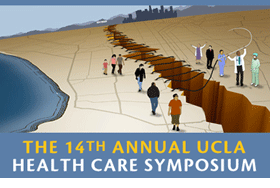 The student-run UCLA Health Care Symposium, which began in 1997, has targeted topics ranging from stem cell research to the high cost of prescription drugs. This year’s symposium, to be held Saturday, Jan. 23 at Covel Commons on the UCLA Campus, will tackle an issue closer to home: health care disparities in L.A.
The student-run UCLA Health Care Symposium, which began in 1997, has targeted topics ranging from stem cell research to the high cost of prescription drugs. This year’s symposium, to be held Saturday, Jan. 23 at Covel Commons on the UCLA Campus, will tackle an issue closer to home: health care disparities in L.A.
They could have looked nationally, or even globally. But they saw Los Angeles as a better-than-textbook example of health care inequities—a place where a 15-minute drive can transport you between extremes of wealth and poverty.
“Bridging the Divide: Practical Health Care Solutions for Los Angeles,” which is the focus chosen by the five student directors charged with running this year’s conference, will feature speakers and a panel discussion exploring the issue from a variety of demographic, clinical and policy perspectives.
“We just felt that sometimes it’s important to look in your own backyard,” said one of the directors, Michael Safaee, 23. “What can we as students do to make a difference? The first way to attack a problem is to understand it.”
The conference, expected to draw between 300 and 400 people, is free and open to the public, with advance registration encouraged. The student directors worked closely with an advisory board headed by Dr. Gerald S. Levey, dean of the David Geffen School of Medicine at UCLA. Levey, who is stepping down as dean, established the public forum after a group of students approached him with the idea. “He wanted to give the students a venue to ask important questions,” Safaee said.
This year’s student directors credit their predecessors with setting up a good infrastructure to help with logistics and fundraising. But they’ve come up with some innovations of their own—such as an interactive registration process in which audience members can send in questions for the speakers along with their own ideas for creating better access to healthcare in Los Angeles. The ideas will be projected onto screens during the event, and “some of the ones we liked the best will be printed out on sheets at every table to get people talking,” said Neelroop Parikshak, 24, who is handling logistics for the symposium.
Los Angeles County Supervisor Zev Yaroslavsky, who previously addressed the symposium in 2000 and 2007,will deliver this year’s keynote address. Other speakers include Dr. David M. Carlisle, Director of the California Office of Statewide Health Planning and Development, and Dr. Hector Flores, Chairman of the Family Medicine Department at White Memorial Medical Center. Loretta Jones, Founder and Executive Director of Healthy African American Families II, and Yasser Aman, CEO and President of University Muslim Medical Association Community Clinic, will take part in a panel discussion moderated by Dr. Patrick Dowling, Chair of the UCLA Department of Family Medicine.




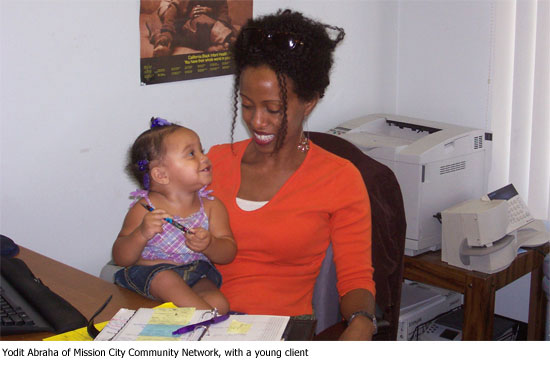

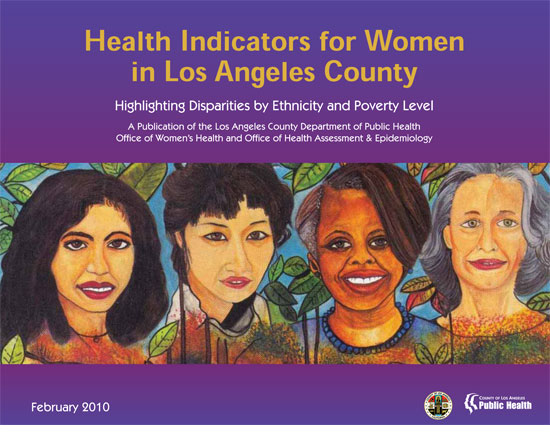
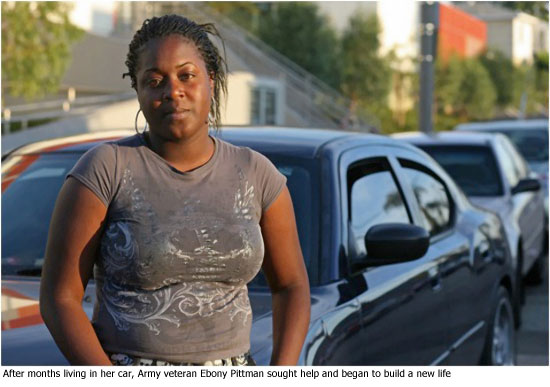







 405 bridge work causes a stink
405 bridge work causes a stink
